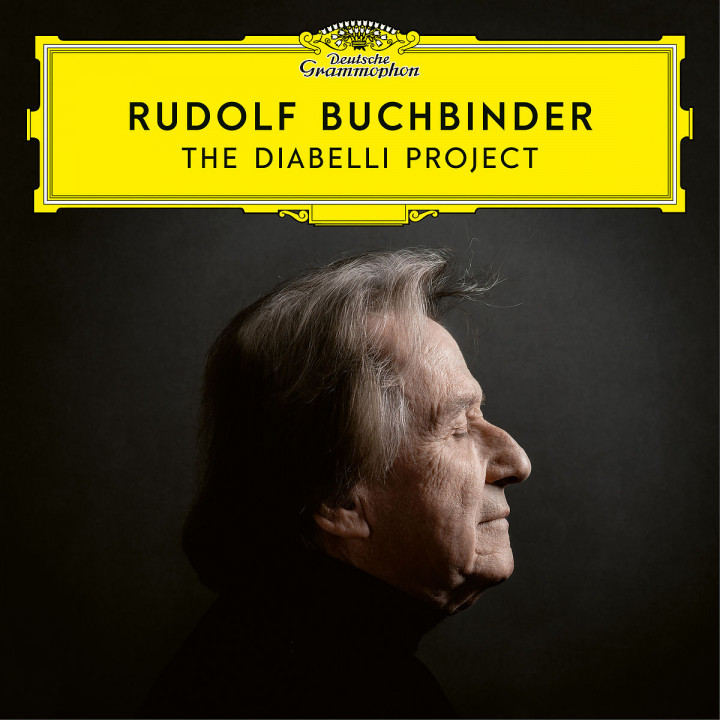RUDOLF BUCHBINDER – THE DIABELLI PROJECT
Sarah Dunlop, February 2022
Beethoven’s Diabelli Variations starting point is widely known. In 1819, the Viennese publisher Anton Diabelli sent more than 50 Austrian composers a waltz of his own making, asking each of them to compose a variation to be included in a collective publication. The initiative was joined by some of the leading musicians of the time, including Czerny, Hummel, Schubert, Moscheles, Kalkbrenner, Tomasek and little Liszt. Beethoven, on his part, composed not one but 33 variations which turned to be his famous opus 120.
In 1973, Rudolf Buchbinder recorded a double disc with Beethoven’s Diabelli Variations on the one hand and the other 52 collective variations on the other. In 2020, for the Beethovenian anniversary, Deutsche Grammophon was the chosen label by the pianist to publish a double album, named The Diabelli Project. The project aims to repeat the story: just like Diabelli did one day, Buchbinder has commissioned new variations from several renowned current composers. Eleven were the selected artists for this important mission: Lera Auerbach, Brett Dean, Toshio Hosokawa, Christian Jost, Brad Lubman, Philippe Manoury, the late Krzysztof Penderecki, Max Richter, Rodion Shchedrin, Johannes Maria Staud, Tan Dun and Jörg Widmann.
The interpretation of Beethoven’s Diabelli Variations is admirable, and they highlight the artist’s phenomenal mastery. His performance is always very conservative and cautious scrupulously sticking to the original score almost to perfection. There is not much innovation in terms of sound and color. It is indeed very loyal to Beethoven’s creation.
With this album Buchbinder revalues certain composers and the brilliant quality of their work. Hearing a work by Liszt as a teenager is something priceless, but works from Hummel, Kalkbrenner, Moscheles or Kreutzer also deserve great consideration.
Out of the 11 contemporaries, Toshio Hosokawa, Rodion Chtchedrine, and Jörg Widmann, approach the idea of variation from a theme in the old sense of the genre. And only very few (Manoury, Jost, Chtchédrine, Staud) respect the “logical” time extension of between one minute and two and a half minutes, and some of them even go over five minutes. But when the piece is as beautiful and interesting as Lera Auerbach’s or Tan Dun’s, I think we can gladly elude this fact.
Being a disciple of the great Austro-Germanic tradition, Rudolf Buchbinder playing is emotionally reserved and is characterized by a dominant technique at the service of the composer. However, this fact doesn’t rest personality in his interpretations which can be easily noticeable, rewarding us with a powerful, bright and nuanced sound with great contrasts between forte and piano and small inflections in the musical line. The fast tempi are brisk, and the slow ones keep the right tempo, very elegant and graceful never falling into a lethargic state.
These interpretations full of sonic nuances and technical greatness perfectly portray the essence of Beethoven’s harsh humor.

